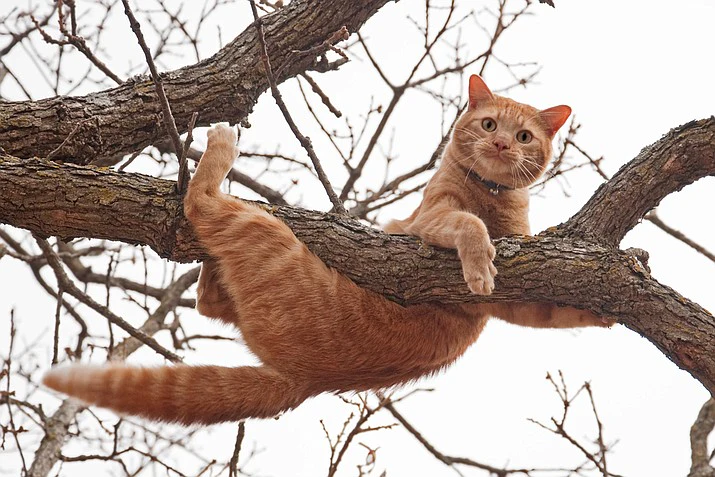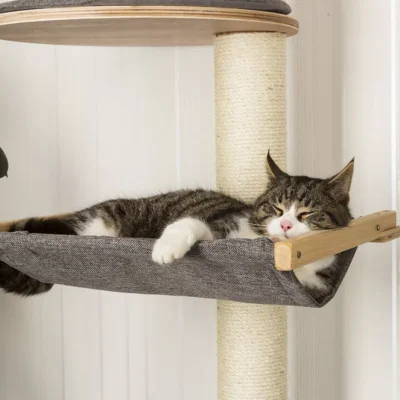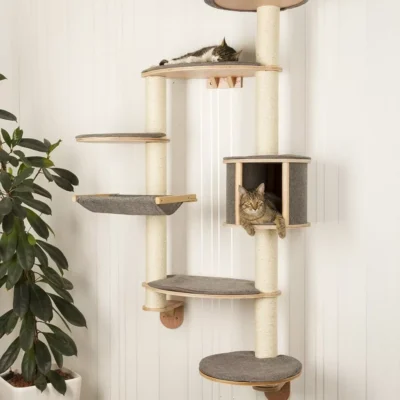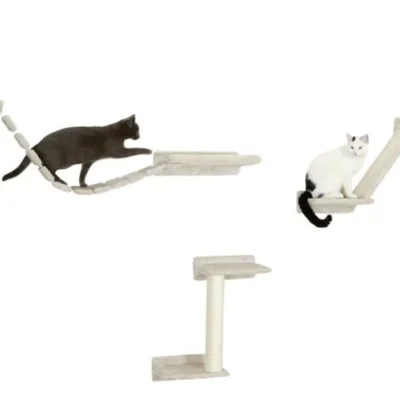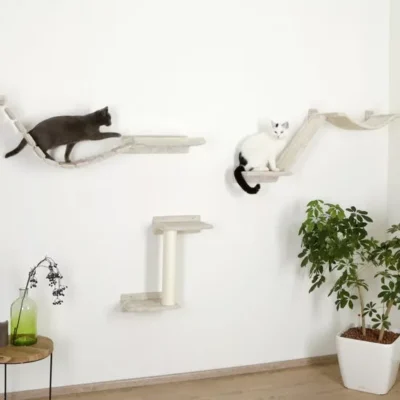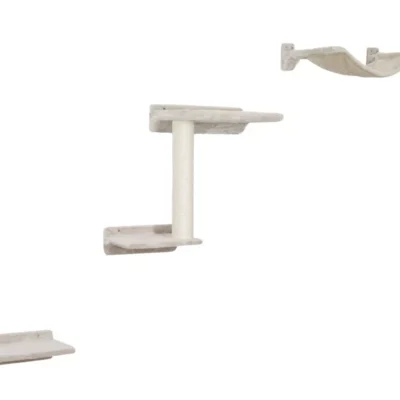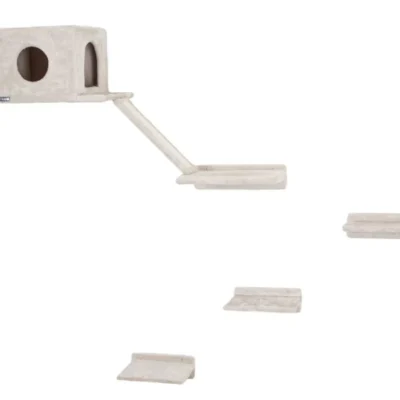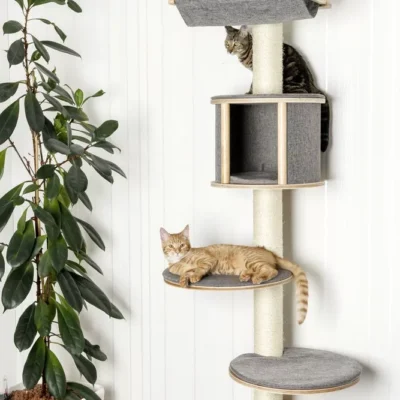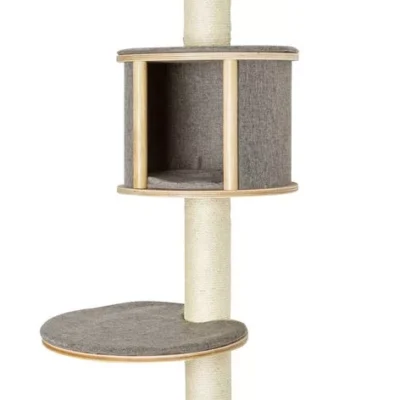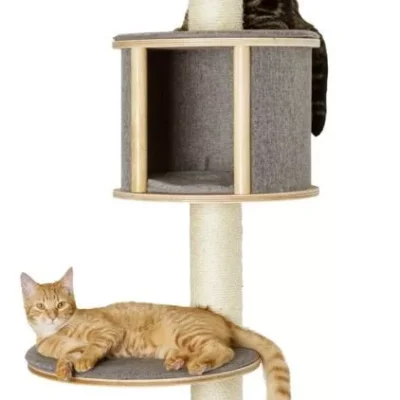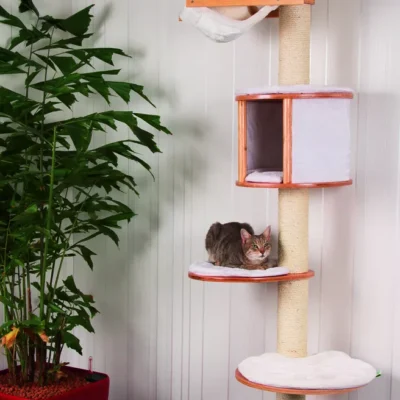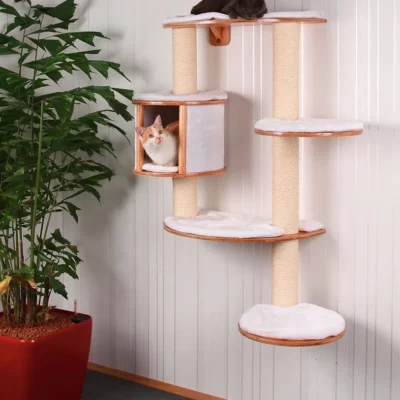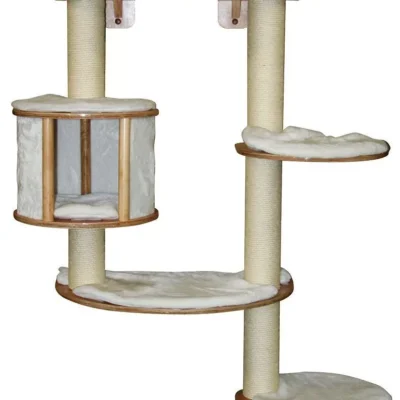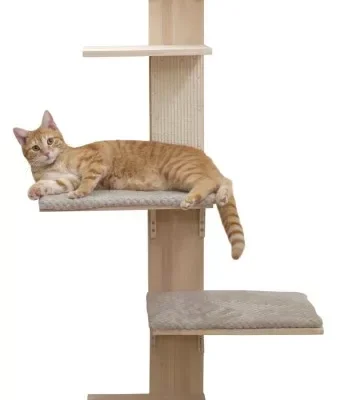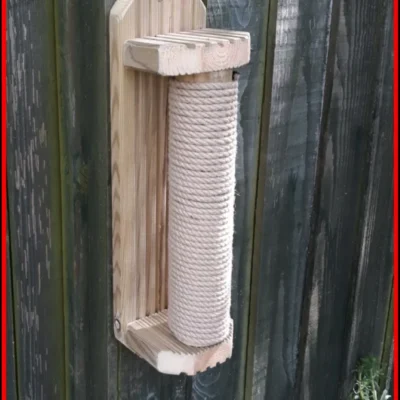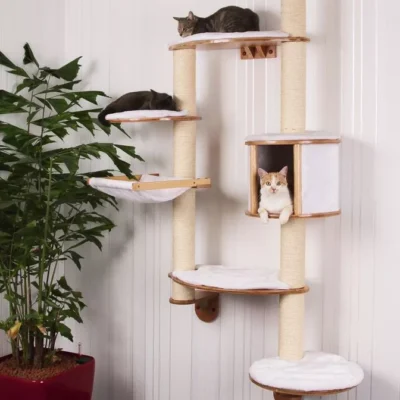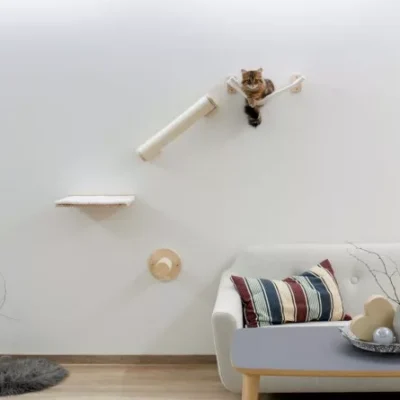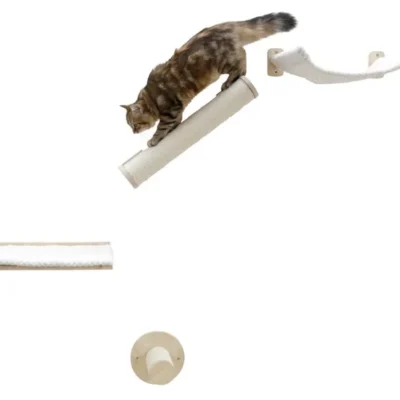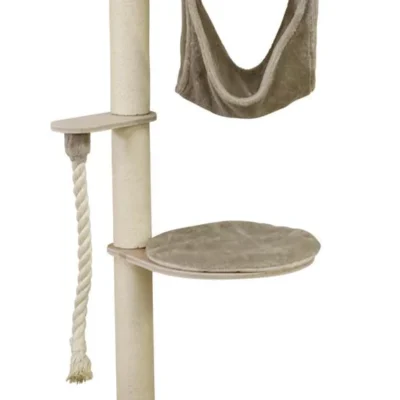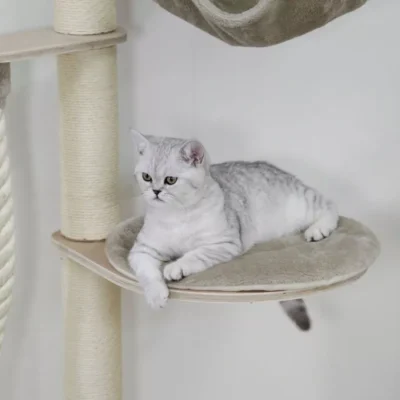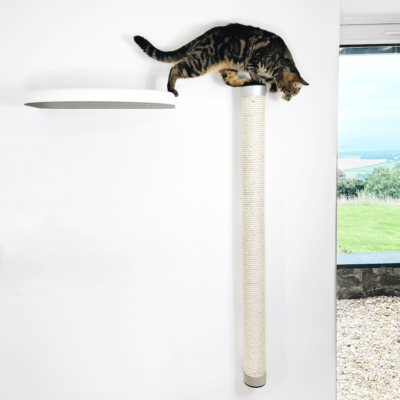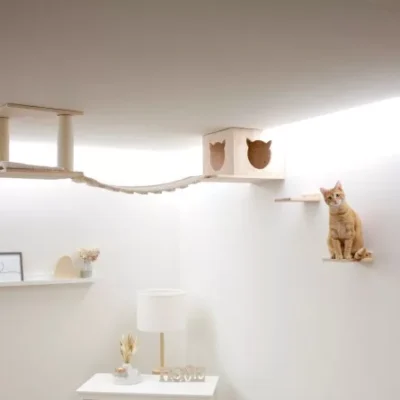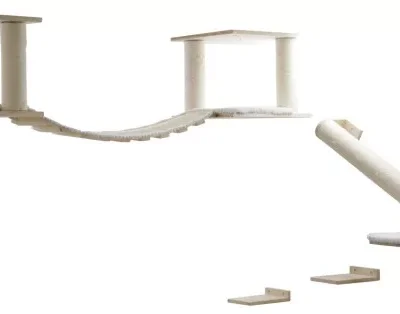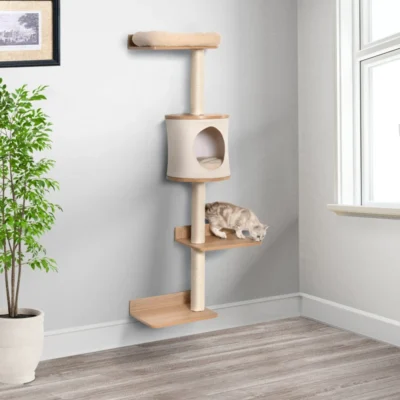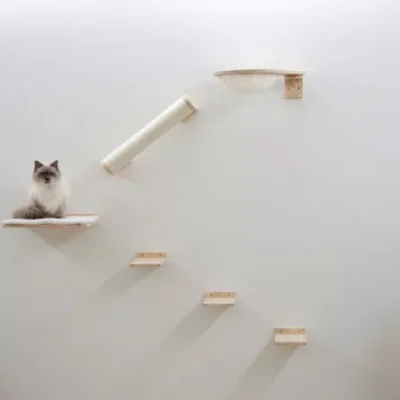0
Cats, known for their mysterious and often puzzling behaviors, exhibit a particularly fascinating trait: their love for high places. This behavior, which sees them climbing to the tallest points available, be it a bookshelf or the apex of a cat tree, is not just a quirk but a deeply ingrained instinct. This penchant for heights is not a mere whimsical preference but a survival tactic developed over millennia. Observing our domesticated feline companions, it’s clear that despite their comfortable and safe living environments, their primal instincts are still very much active. This instinctual drive is intertwined with their needs for safety, observation, and playful activities.
To fully grasp this behavior, it’s essential to explore the evolutionary history of cats. Originally, the forebears of our house cats were both hunters and the hunted in the wild. Their existence hinged on their prowess in catching prey and evading predators. Climbing to higher grounds served dual purposes: facilitating hunting and ensuring safety.
From a hunting perspective, being elevated helps cats survey their surroundings and spot potential prey more easily. This vantage point offers a strategic advantage, enabling them to precisely pounce on their prey, reminiscent of large felines like leopards who are known to haul their catch up trees.
Conversely, climbing was also a defensive tactic against predators. A high viewpoint allowed cats to monitor their environment for dangers. Elevated positions afforded them more reaction time and escape options in the presence of threats.
In domestic settings, the instinct for high vantage points is still prevalent in cats. While modern house cats may not need to fend for themselves or escape predators, the ingrained need for a high lookout is unaltered. Elevated spots provide cats with a sense of security, especially in homes with multiple pets, offering a sanctuary to avoid conflict or seek solitude.
The observational aspect from a high position is also crucial for cats. Their innate curiosity is well-served by such vantage points, allowing them to oversee their domain without feeling vulnerable. This comprehensive view of their surroundings helps them keep tabs on the activities within their territory.
In summary, cats’ affinity for high places is a deeply rooted behavior stemming from their evolutionary background. Understanding this aspect of feline behavior can aid cat owners in creating a more stimulating and comfortable living space for their pets. Providing access to high perches or cat trees can fulfill these instinctual needs, leading to a content and well-adjusted feline friend.
The Mechanics of Climbing
Cats, with their natural proclivity for climbing, owe this skill to a range of unique anatomical characteristics that have evolved to enhance their climbing abilities. These features enable them to scale heights with remarkable agility and precision.
One of the most pivotal elements in a cat’s climbing repertoire is their retractable claws. This feature sets them apart from animals like dogs, whose claws are permanently exposed. Cats can extend and retract their claws at will, which is crucial for climbing. They use their sharp claws to grasp surfaces firmly, ensuring grip and stability. This retractability also protects their claws from wear and keeps them sharp for climbing.
Cats possess an extraordinary degree of body flexibility. Their spines, more elastic than many other animals, facilitate easy twisting and turning, essential for maneuvering through obstacles like branches or making abrupt turns during a climb.
Moreover, the strength of a cat’s hind legs is a significant factor in their climbing prowess. These muscular legs provide the necessary power for leaping and climbing, enabling them to jump onto high surfaces or tackle steep climbs with ease.
Cats combine their physical traits to climb effectively. For instance, when scaling a tree, a cat will use its retractable claws for grip, employing the strength of its hind legs for upward propulsion and its front legs to pull closer to the tree. Their flexible bodies aid in maneuvering around barriers and maintaining balance. The tail also plays a role in balance, adjusting to counterbalance their body weight during movement.
Cats often climb in a spiral or zigzag pattern, which eases the ascent, especially on larger trees where vertical climbing might be more challenging.
While cats excel in climbing, descending presents a greater challenge. The main issue lies in the orientation of their claws, which are not as effective for gripping surfaces when descending head-first due to their backward curve.
To counter this, cats often descend backward or in a zigzag manner, using their hind legs for controlled descent. This method is less instinctive and can pose difficulties, particularly for young or inexperienced cats.
This is why cats sometimes find themselves stranded in trees, having climbed up effortlessly but struggling to find a safe way down.
For cat owners, understanding these climbing mechanics is enlightening. It sheds light on both the how and why of feline climbing and their occasional predicaments. Providing safe climbing structures at home, such as cat trees or climbing shelves, can allow cats to exercise these natural behaviors in a secure and controlled setting.
High-Risk Heights – Why Cats Get Stuck
Cats, driven by their innate curiosity and natural climbing instincts, occasionally find themselves in precarious situations, particularly at higher elevations. The interplay of psychological factors and physical limitations often culminates in these challenging scenarios.
The psychological impact of heights plays a significant role in why cats get stuck. Two primary psychological factors are fear and disorientation. At elevated heights, cats can experience heightened fear or panic, particularly if they are unaccustomed to such altitudes. This sense of dread can intensify if they perceive threats from below, like loud noises, other animals, or unfamiliar environments. High vantage points can also cause disorientation, particularly for cats unfamiliar with the perspective from such heights. Difficulty in assessing the distance to the ground or identifying a safe descent path can lead to confusion and anxiety.
Beyond psychological aspects, the primary reason cats get stranded at heights is their physical limitations in descending. Cats’ claws, being curved and retractable, are adept for climbing up but less effective for descending. The inability to grip surfaces firmly during a downward climb hinders their control over descent. Additionally, cats’ body mechanics favor ascending rather than descending. While their strong hind legs excel in upward propulsion, they offer less control when moving downwards. Descending head-first is not a natural posture for cats, impeding the effective use of their claws.
Various real-life instances exemplify cats getting stuck due to these factors. For example, a young kitten, driven by curiosity, climbed a tall oak tree but became immobilized by fear at a considerable height, lacking experience in navigating descent. In an urban setting, a cat named Luna climbed onto a rooftop but struggled with the steep descent amid the bustling city noise, exacerbating its anxiety and complicating the descent. Similarly, Jasper, pursuing a bird, ascended a tall pine tree in a rural area. Once the bird flew off, Jasper found himself at an intimidating height, with the tree’s awkward branch angles and his own fear complicating his descent.
These examples underscore the various contexts in which cats may end up stranded at heights. Despite their impressive climbing abilities, their skills in descending, coupled with their psychological reactions to height, often lead to challenging situations. Understanding these dynamics can assist cat owners in adopting preventive strategies, such as supervising outdoor activities or providing indoor climbing structures that ensure safety and cater to their natural inclinations.

